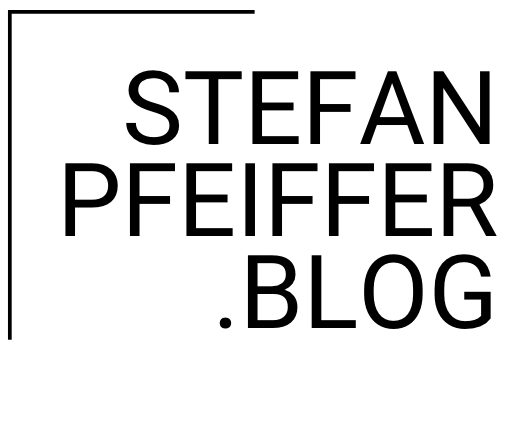Recently, a number of different events have rekindled my concern about the information overload and the large number of information channels. The era of the e-mail generation is coming to an end, even if the daily deluge of e-mails is actually growing rather than ebbing. Now people talk about the Facebook generation, although this term should be understood in a broader sense than just of using this social network in the technical sense. It is much more about the multitasking generation in a multichannel age characterized by the risk of multimedia distraction and by constant exposure to information. Facebook (and other social networks) certainly play (or played) an important role in changing communications behavior, and for quite a while it was the younger generation in particular that primarily used Facebook as a communication medium and turned their back on traditional e-mail. This phase is (allegedly) already over. People say Facebook is “out.” Instead, tools like WhatsApp continue to attract record numbers of private users.
But it would be a big mistake to assume that e-mail has replaced Facebook or that WhatsApp has made Facebook obsolete. All of these channels continue to co-exist alongside one another. And e-mail, Facebook and WhatsApp are just part of the picture. There are also instant messaging (chatting), Skyping, texting, Xing, LinkedIn, Twitter, Pinterest and many more tools. Of course, not everyone uses all of these channels, but it is beyond dispute that more types of channels will emerge in both the private and professional worlds. This poses huge, underappreciated challenges for users in terms of how they process information and conduct communications.
A story from the hustle and bustle of everyday life is relevant here: My wife, who works in the cultural sector, called a German museum and inquired if her e-mail had been received and why no one had replied. A member of the administrative staff answered in a broad Swabian accent: “We don’t read e-mails. There are just too many of them.” This statement may seem comical but it contains a kernel of truth. The sheer number of messages and the abundance of different channels put considerable demands on users and can even be overwhelming. And I believe that when it comes to teaching media competence in schools and universities as well as companies, we are still failing on a grand scale. Who has ever been taught how to use e-mail sensibly and productively? Many users constantly check their e-mails instead of visiting their inbox at regular intervals. The consequences of such behavior are that people often don’t work for longer periods at a stretch, have a hard time getting into the rhythm of work or are constantly being interrupted. This all goes hand in hand with a significant loss of productivity.
Today, e-mail is by far not the only way I receive messages. Work-related messages reach me via business networks like Xing or LinkedIn as well as through Facebook. And “direct messages” in 140-character format increasingly trickle in on Twitter. These messages used to be sent by e-mail. Senders normally choose their preferred channel and contact me that way. Can I ignore the messages like the administrative staff quoted above did? Probably not. The situation becomes even more complex as professional and personal communications channels overlap more and more. Although I use Facebook mostly “privately,” I am also connected on the network with colleagues and acquaintances from my professional activities. So I don’t just receive personal messages there.
But it’s not just that messages reach me asynchronously. Before my former employer was acquired by IBM in 2007, my chats were only of a personal nature. Even back then it was commonplace at IBM for staff to use the company’s own instant messaging tool Sametime. It’s a given that employees and management are logged in to Sametime. Statistics show that 100,000 of the some 400,000 IBMers are almost always online and can be directly contacted in real time via chat (unless they have set their status to “Do not disturb”). The advantage is that you see who is available and which employees worldwide, even those in other time zones, you can contact to find out information. The risk is that your work is constantly being interrupted by an incoming chat message. So are users being taught when to engage in chats and when to check e-mails – that is, when real-time communications make sense and when time-shifted communications are best? The answer is, for the most part, no. You (hopefully) learn on your own. If not, there is great potential for disruptions and “incorrect” usage of these communication channels.
It’s not only the channels, however, that are becoming ever more diverse. In the past, you could only be reached in the office by e-mail at normal working hours. Then laptops and notebooks came on the scene, which allowed you to check and respond to e-mails at home and on the go. Who can actually still remember the immensely melodic beeps and hissing of a dial-up modem? Soon afterwards BlackBerry phones became the status symbol of an entire generation of managers. E-mails on the mobile phone, anywhere and anytime. Progress indeed. But that’s old hat today. Receiving e-mails on cell phones is now standard. And it’s no longer just e-mails. Other services from chatting to social networks have also made the move to smart phones and tablets: Sametime – IBM’s chat program – can be used on iPads, iPhones and other types of devices. You can now participate in online meetings via mobile devices. And, of course, social software is available on these devices. Not just tools like Facebook, Twitter or Xing, but also “secure” business software like our IBM Connections run on all relevant mobile devices, and from these you can access all the data that is stored in the company’s internal social network.
So there’s an ever-increasing number of channels and apps and, on top of that, you can be reached anytime, on the go, also in your car, which is becoming a wireless hotspot and has software that reads your e-mails aloud. And now we come to the next trend. It’s no longer about messages in text format. Audio – the reading aloud of e-mails – and especially video are taking over the world of communications. Skyping or FaceTiming is the “in” way to communicate with friends and family, and even in the corporate world people are asking with increasing frequency to meet via video conferencing and video calling, especially when travelling is less common due to financial reasons. I’m personally not a fan of this (I work from a home office, and it’s nice not always having to be well groomed and smartly dressed), but the trend is unstoppable.
What role does “traditional” e-mail have to play in a scenario where you can be reached via a wide variety of communications channels, anywhere on any device, per text, audio and video? A colleague of mine, Luis Suarez, has been positing a life “outside the inbox” for several years now, and has even made it into the New York Times with this approach. He mainly uses instant messaging and the telephone, and is a vehement advocate of IBM Connections, the social software that IBM uses internally and also successfully sells to external organizations. For Luis, who has been exploring issues related to knowledge management for quite some time, it’s mostly about sharing information transparently and exchanging and discussing creative ideas in business environments. Many of the reasons that he gives are nothing new: a company’s knowledge assets don’t belong in personal e-mail silos that only their owners can access. Whoever uses e-mail to manage tasks and projects is always faced with huge challenges when new employees join a project. On the other hand, if you work with project communities or activities, you can immediately provide new employees with the current status and all relevant information. The knowledge gained from the project and the related documentation don’t disappear in the nowhereville of an e-mail folder or in files strewn about and saved helter-skelter somewhere, but remain instead – in the best practice scenario – the company’s storehouse of knowledge and are accessible anytime.
Sharing information in such a transparent way and engaging in constructive dialogue has a direct impact on a company’s culture. The new method of working breaks down familiar barriers and hierarchies, and encourages collaborative thinking and teamwork. What if even the board of directors supports and participates in this initiative, what if the CEO no longer distributes messages by e-mail but rather publishes them in a blog post in the company’s social network and explicitly calls on employees to leave comments and engage in discussions – well, all of this points to a different style of leadership. Ginni Rometty is actively promoting such a change of culture at IBM and has challenged management and staff to embark down the road of social business together.
But let’s go back to the much-adored e-mail. Is the end of the e-mail now upon us? Certainly not. However, e-mail must take on a different role. E-mail will become your personal messaging center or even your processing hub. Other systems notify users via e-mail. My Fritzbox router automatically sends any voicemails message I receive to my e-mail inbox, and I can listen to them anywhere, on any of my devices, even when I’m not at home. Twitter and Facebook notifies me when a post was commented or retweeted. IBM Connections sends me a daily summary of what happened in my network in the last 24 hours. But it’s not just about notifications. Systems like IBM Connections also send me tasks that I can edit in my Notes 9 client without switching to the source system – Connections in this instance. The e-mail inbox is evolving into a stream of messages and activities that are personally relevant to me. However, e-mail is – apart from messages and information of a personal nature – no longer the main point of storage.
To sum up everything discussed in this post, we currently see the following trends:
- Synchronous and asynchronous communications channels, both personal and professional, are growing in number. There is no longer “the” inbox or “the” communications channel.
- The boundaries between personal and professional communications channels have become blurred and often overlap.
- We can be reached anytime today on a host of devices – from smart phones to tablets to computers – via a host of applications.
- Today’s messages are no longer delivered just in text format. Audio and especially video are on the rise.
- Social networks and social channels have become firm fixtures on the communications landscape, both in our private lives and within companies. They not only make communications public and transparent, but also change communications behavior and challenge established hierarchies.
- E-mail is not going to disappear; it is now the main processing terminal for communications and no longer a place where information is stored.
All of these trends underscore the necessity and urgency of developing media and communications competencies in both the personal and professional realms. Intelligently handling the different channels and the flood of information will become one of the core skills of our time.


Kommentar verfassen